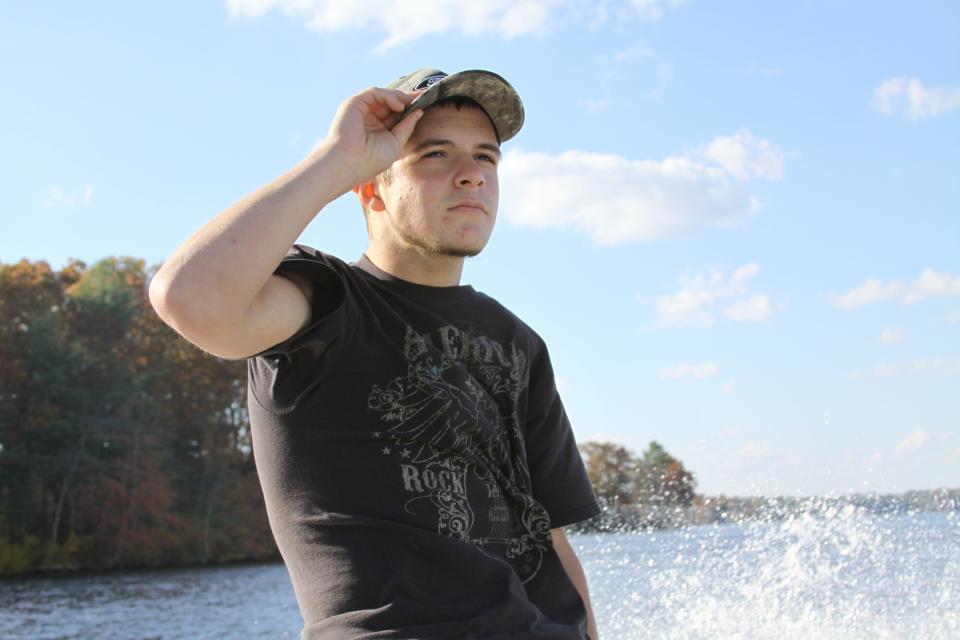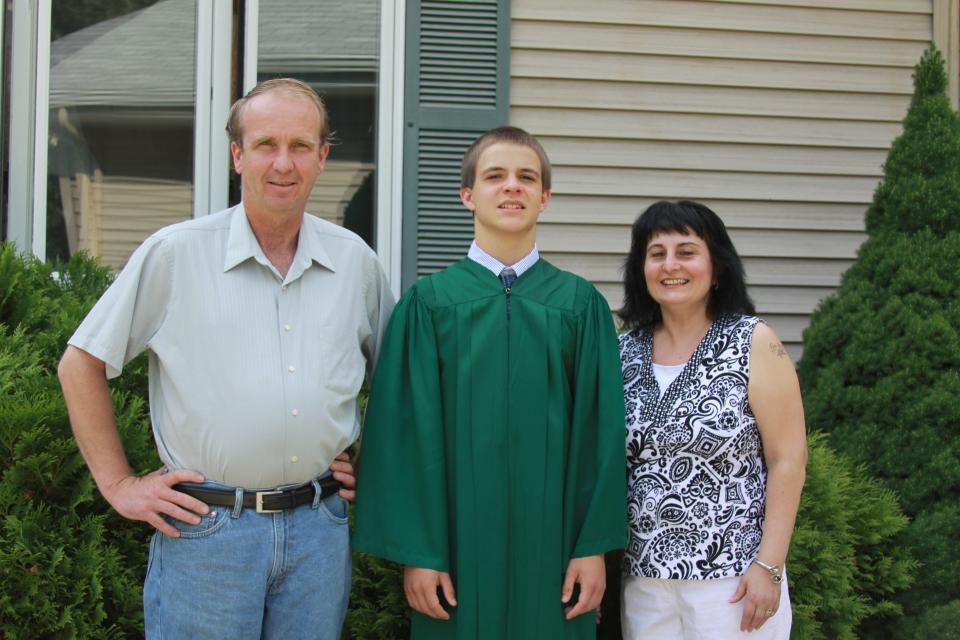How did the Lindquists die? State's last witness testified Friday in Griswold murder trial
NEW LONDON – The staid and unpretentious confines of New London Superior Court’s Courtroom 3 on Friday became a chamber of recounted horrors as a medical examiner detailed the stabs, blows and burns inflicted on two murdered Griswold residents.
Deputy Chief Medical Examiner Dr. Maura DeJoseph was the state's last witness in Hartford resident Sergio Correa’s weeks-long triple-murder trial. As she detailed the autopsy results for Matthew and Janet Lindquist, several friends and family members of the victims bowed their heads.
Correa, 30, is accused of killing Kenneth, Janet and Matthew Lindquist in the hours just before or on Dec. 20, 2017 and burning the family’s Kenwood Estates home to its foundation. He faces 14 counts in the crimes, including multiple charges of murder.

Though DeJoseph did not perform the autopsy on the burned and distorted body of 61-year-old Janet Lindquist, she was testifying in place of the absent medical examiner who did conduct the examination a day after Janet and Kenneth’s bodies were removed from the rubble of the home they built together.
More: Killingly High football team set to host Branford in semis Class M semifinals
Several autopsy photos of Janet Lindquist were briefly illuminated by Senior Assistant State’s Attorney Thomas Delillo on an overhead projector showing her severely burned body curled up in “pugilistic posture,” one in which fire victim’s limbs tend to contract and contort.
But despite the charred muscles and lack of skin on Janet Lindquist’s body, DeJoseph said there were “definite” signs of blunt impact injuries to the victim’s head, including fractures to her skull and bleeding noted in the membrane layers over the brain. She could not determine what instrument caused the injuries and could only conclude the victim had been struck “at least” twice.
A terrible discovery in autopsy
The presence of soot in the victim’s lungs, blood in her airway and elevated carbon monoxide levels led to a terrible conclusion: Janet Lindquist was still alive as smoke from the house fire enveloped her.
DeJoseph said Janet Lindquist died of a combination of blunt impact injuries, smoke inhalation and thermal injuries, or burns. During Thursday’s proceedings, a medical examiner said Janet Lindquist’s husband, Kenneth, died of blunt impact injuries made from a hard, rounded object.

Under cross-examination by Joseph Lopez, one of Correa’s defense lawyers, DeJoseph said she could not say that Janet Lindquist’s non-fire injuries were survivable, only that based on similar cases “she could have died” from them and was alive for a period of time during the fire.
Lopez also elicited from DeJoseph that Janet Lindquist’s hyoid bone, a horseshoe-shaped bone in the neck, was not broken. That fracturing of that bone can be an indication of strangulation, though such breakage does not always occur.
Ruth Correa, the adopted sister of the defendant, who is also accused in the 2017 murders, previously testified she saw her sibling loop a shoelace around Janet Lindquist’s neck on the night of murders, place his knee in her back and pull.
Medical examiner: 67 'sharp force' injuries found on Matthew Lindquist
DeJoseph next broke down the autopsy results of 21-year-old Matthew Lindquist, son of Janet and Kenneth. Police said Matthew Lindquist cooked up a scheme with Correa to stage a robbery at his parents’ home in which his father’s rifles would be exchanged for heroin.
But prosecutors contend Correa never had any intention of following through on the deal and instead, with the help of his sister, stabbed Matthew Lindquist to death and left his body in a stretch of nearby woods before invading the Lindquist home and killing his parents.

Matthew Lindquist’s body was not found until months after his death. The long period of exposure to the elements led parts of his body to decompose and others to mummify, DeJoseph testified.
Despite the poor condition of the remains, 67 separate “sharp force” injuries were found on the body’s head, neck, torso and extremities. DeJoseph said one of the five head wounds was a “chop” injury to the back of the skull made by “sharp, cutting implement with a bit of weight,” but could not narrow the description further.
Ruth Correa testified she saw her brother chase after Matthew Lindquist on the night of his death and strike him in the head with a machete. She said she and her brother proceeded to stab the stricken man over and over.

DeJoseph said Matthew Lindquist suffered 10 wounds to his torso, including two that penetrated to his heart and three that hit a lung. He was cut or stabbed 39 times in the back and an arm injury was deep enough to sever an artery, DeJoseph said.
Matthew Lindquist died of multiple stab wounds, the autopsy concluded. Like in his mother and father’s deaths, the manner of death was the same: homicide.
Video: Atlantic salmon released into Shetucket River in Sprague River Park
Matthew Lindquist, who struggled for years with heroin addiction, had taken morphine or heroin – which over time breaks down into morphine – within hours of his death, DeJoseph said. A toxicology report also found Suboxone, prescribed to limit users’ opioid cravings, in Matthew Lindquist’s system.
DeJoseph agreed with Lopez’s statement that it was not possible to tell if Matthew Lindquist was stabbed with “one, two or 20 knives,” or if multiple individuals inflicted the injuries.
'We're almost there.' Correa trial nears end
DeJoseph’s testimony was the last of more than a dozen witnesses called by prosecutors since the trial began on Nov. 12. Delillo told Judge Hunchu Kwak he expected to conclude the state’s case on Monday.
Lopez, who is under no obligation to do so, said he “may” call his own witnesses on Monday. Depending on Lopez’s schedule and closing arguments, the jury could begin deliberations as early as next week.
“We’re almost there,” Kwak told jurors before dismissing them for the weekend.
John Penney can be reached at jpenney@norwichbulletin.com or at (860) 857-6965
This article originally appeared on The Bulletin: Prosecutors end case in Griswold triple-murder with autopsy results

